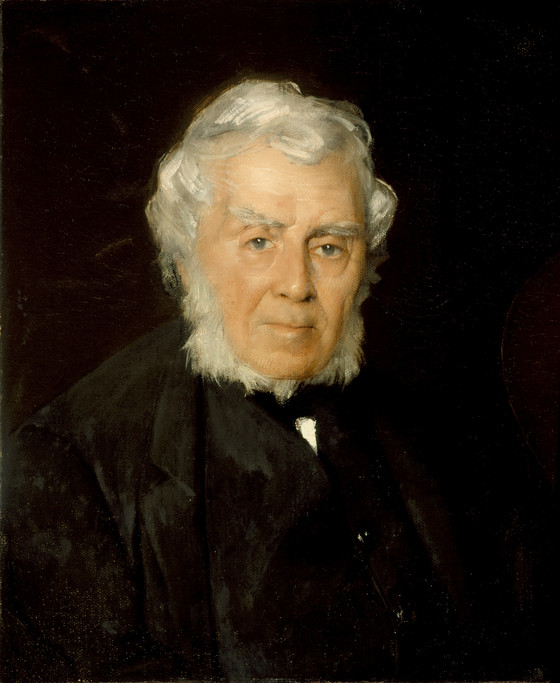ROBERT W. WEIR, the father of the artist and also of the painter JOHN FERGUSON WEIR, was born in New York, New York, in 1803....
ROBERT W. WEIR, the father of the artist and also of the painter JOHN FERGUSON WEIR, was born in New York, New York, in 1803. He studied for three years in Florence and Rome, returning to New York in 1827. He was elected a member of the National Academy of Design two years later. He was instructor in drawing at the United States Military Academy from 1834 to 1876 and is best known for his paintings of historical subjects, such as Embarkation of the Pilgrims, 1837- 43 (Capitol Rotunda, Washington, D.C.). He died in New York in 1889.
Robert W. Weir was J. Alden Weir’s first teacher and continued to give his son advice and encouragement later in life. The son retained a deep admiration for his father and freely acknowledged his debt to him. Among the first paintings he undertook after his return from study in Paris were a portrait of his father exhibited in 1878 at the National Academy of Design, and a study for the portrait, exhibited at the Society of American Artists. When J. Alden Weir painted his self-portrait for the National Academy of Design in 1886, he acknowledged his debt to his father by including the finished portrait of 1878 in the background. (He also executed a watercolor study, c. 1878 [private collection], possibly in preparation for this important early portrait.)
The museum’s portrait of Robert Weir is quite unlike the portrait of 1878 and was painted about seven years later. The earlier work’s dramatic pose and conventional studio lighting from the side and above have been replaced by a direct gaze and frontal illumination. The lack of depth, flat lighting, and discrete brushstrokes in this portrait of his father and the accompanying one of Mrs. Weir may reflect the artist’s interest during these years in the work of Edouard Manet (1832-1883). At the same time the example of the old masters is strong in all his early work.
Daughter of an Episcopal priest, Susan Martha Bayard was born in 1817. She taught school before joining the household of Robert W. Weir in 1845 to help raise his nine children after the death of his first wife. On July 15, 1846, they were married, and she bore him seven more children. Most of the sons followed military careers, but John Ferguson Weir, a child of the first marriage, and J. Alden Weir, her youngest son, became artists. Mrs. Weir died in 1900.
More...



